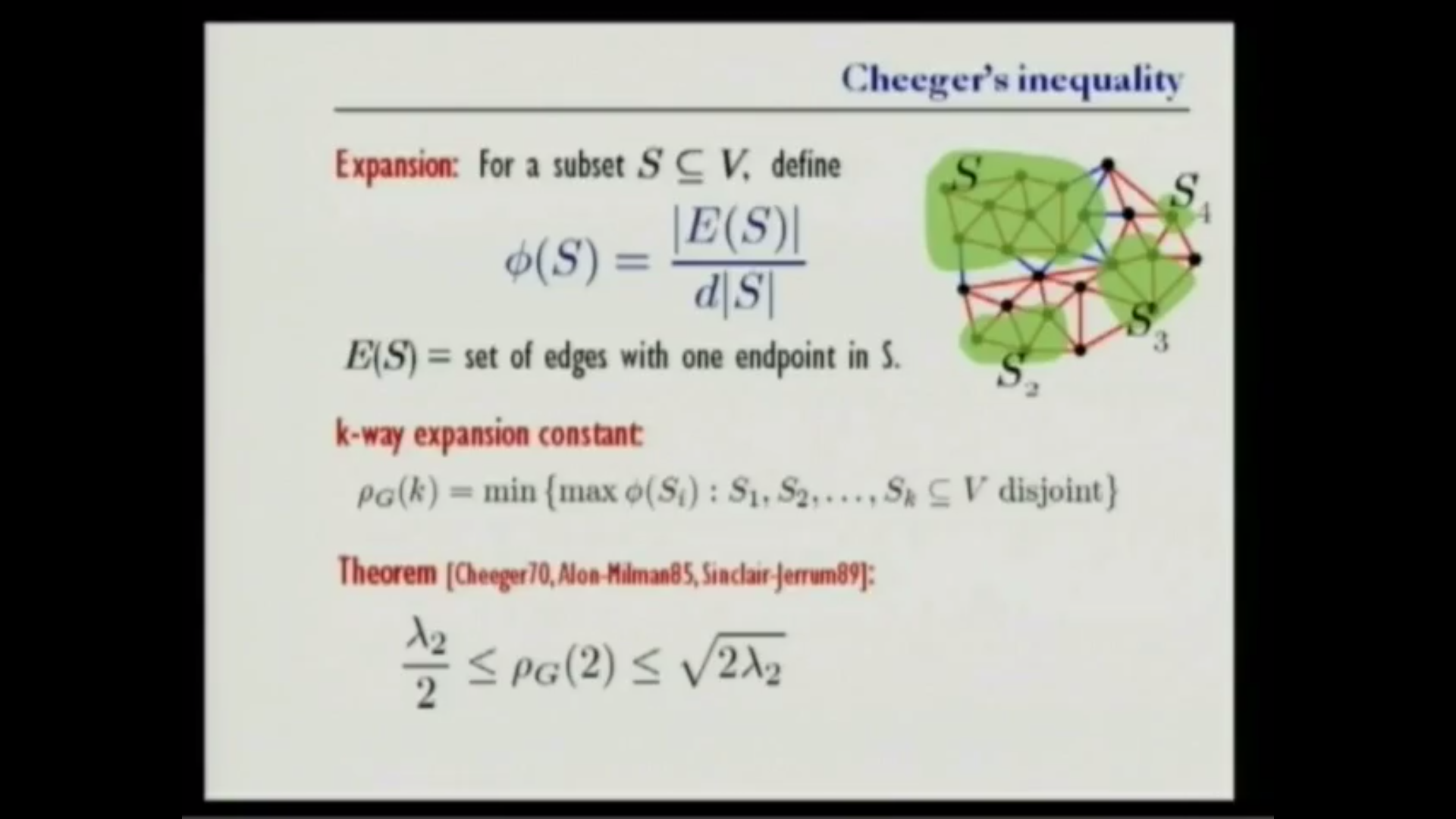Multi-Way Spectral Partitioning and Higher-Order Cheeger Inequalities
Presenter
December 5, 2011
Keywords:
- geometric algorithms
- discrete geometry
- applied combinatorics
- graph theory algorithms
- spectral graph theory
- partitions and eigenvalues
MSC:
- 05C60
- 05C42
- 05C10
- 05Cxx
- 05-xx
- 05E30
- 68W40
- 68Wxx
Abstract
A basic fact in spectral graph theory is that the number of connected components in an undirected graph is equal to the multiplicity of the eigenvalue zero in the Laplacian matrix of the graph. In particular, the graph is disconnected if and only if there are at least two eigenvalues equal to zero. Cheeger's inequality and its variants provide an approximate version of the latter fact; they state that a graph has a sparse cut if and only if there are at least two eigenvalues that are close to zero.
It has been conjectured that an analogous characterization holds for higher multiplicities, i.e., there are k eigenvalues close to zero if and only if the vertex set can be partitioned into k subsets, each defining a sparse cut. We resolve this conjecture. Our result provides a theoretical justification for clustering algorithms that use the bottom k eigenvectors to embed the vertices into R^k, and then apply geometric considerations to the embedding. We extend these techniques to exhibit a nearly optimal quantitative connection between the expansion of sets of size n/k and the k-th smallest eigenvalue of the normalized Laplacian.
A key technical tool from the theory of metric embeddings is the use of random metricpartitions to smoothly localize eigenfunctions.
Joint work with Shayan Oveis Gharan and Luca Trevisan.
